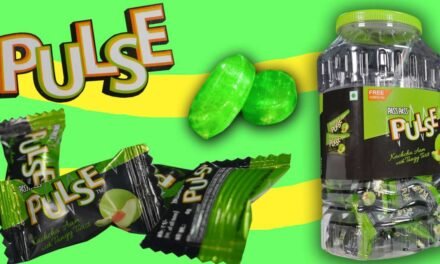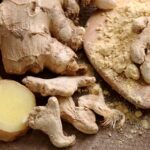Running a successful bakery starts with investing in the right industrial bakery equipment. Whether you’re operating a small-scale bakery business or expanding to a medium-scale unit, having efficient machines like commercial dough mixers, bread slicers, and gas-fired ovens can significantly improve productivity and product quality. This guide, by Keshav B. Kamaliya, walks you through essential bakery machinery, their uses, and practical maintenance tips to ensure your baking process stays seamless, safe, and profitable.
An Introduction to Bakery Machinery
Successful bakery production is connected with the efficient use of bakery equipment. The machine can work more efficiently, quickly, and at a lower cost. Hence, for medium- or small-scale units, industrial bakery machines are preferred. Bakery machines made up of stainless steel are preferred in this way, at least the food contact part should be food-grade stainless. It is also necessary to comply with food laws.
The bakery industry can choose bakery machinery depending on its plant capacity and theavailability of funds. Let’s have a look at some standard bakery equipment and how they work to make your job easy.
Flour Sifter
This bakery equipment is generally placed near the storeroom for ease and quick work disposal. Cone type sifters are usually preferred.
Weighing Machine
Accurate quantities of ingredients according to the product formula are essential for the quality of finished products. Hence, various types of automatic/semi-automatic weighing machines are available. Out of them, the electronic weighing system is the most effective and preferred.
Dough Mixer
It is advisable to use a mixer only when at least 50 kg of flour is used every day. A unit producing bread, cake, biscuits, i.e., assorted bakery products on a small scale, should install a heavy-duty multipurpose cake mixer because it would be helpful for kneading bread dough, mixing cake, as well as beating eggs and creaming sugar and fat. Generally, high-speed, low-speed, and variable-speed vertical/horizontal mixers are available. The spiral and high-speed mixtures are preferred.
A high-speed mixer machine produces a lot of heat through friction, hence, they are provided with a jacket, which keeps the dough cool. it is essential for uniform dough development. Modern high-speed dough mixers are provided with the facility for self-lubrication. As a precautionary measure, a push-button switch should be provided to the operator.
The frame of any dough mixer is made up of mild steel / cast iron, which is mounted with an electric motor of 0.33 to 10 hp (mainly 0.5 to 1.5 hp for small bakeries) as per requirement. They usually have a gear system that allows the speed to be changed. The capacity of bowls may vary from 10 to 200 kg and is made up of stainless steel. The speed of arms varies from 70 to 370 rpm (Revolutions Per Minute) for slow speed and high speed. The arm shape is made in such a way that it can carry out folding, kneading, and stretching action (in case of bread dough) and aerating (in case of creaming purpose) or just simple mixing (in case of cookies and biscuits dough preparation).
Dough Divider
This bakery machine divides the bulk dough volumetrically into individual dough pieces, maintaining the weight as closely as possible. Hence, the dough density (which is highly affected by the extent of fermentation) should be even otherwise, the weight might change. Nowadays, such dough dividers are available which can make 1 to 8 pieces at a time and also make 20 to 30 strokes/minute (however, it is considered the best practice to have a machine having 15 to 18 strokes/minute). It is advisable to purchase a dough divider when 200 to 250kg flour are used every day. Typically, a worker can cut 500 to 600 pieces in an hour, therefore, it is advisable to purchase a divider on comparative economic calculations.
Rounder
Rounding machines basically consist of an external or internal revolving surface against which the freshly scaled dough piece is held by a spiral track or trough. As the surface revolves, it carries the irregularly shaped dough piece upward in the spiral rounding trough, imparting a rolling motion to the dough. This motion results in a uniform rounded dough ball with a thin, smooth and dense skin that not only eliminates the stickiness of the cut dough surface but also serves as a carbon dioxide gas-retaining membrane. The revolving surface may have the form of a conical bowl, an umbrella or a drum.
Intermediate Proover
Intermediate proover generally consists of overhead enclosures that house an endless, tiered conveyer that supports dough carriers in the form of either trays or canvas loops. In these enclosures, dough pieces are rested for 10 to 15 minutes. They are equipped with proper temperature and humidity controller.
Measuring Tools
Measuring tools used commonly by bakers include cups, spoons, scale and ruler. The spoons are typically made of stainless steel and utilised to measure required volume of ingredients such as spices.
Dry Measuring Cups:
Dry measuring cups allow to fill the cup to the top and then “level off” or remove any extra with a straight edge knife or metal spatula. Available in nested sets of 4 to 8 cups. Made of metal or plastic, these cups do not have a pouring spout.
Measuring Bowls:
Measuring bowls are indispensable for accurately measuring dry and liquid ingredients. Food measuring bowls are usually made of glass. Available in graduated sizes, glass dry measuring cups are flat-bottomed with flat edges. For measuring liquids, glass marked-in bowls are used. Lips and handles ensure easy pouring.
Measuring Spoons:
Available in metal or plastic, measuring spoons measure small quantities of liquid and dry ingredients.
Liquid Measuring Cups:
Made of glass or plastic, these cups have a lip for pouring. Measuring cups made of glass or clear plastic is the easiest and most accurate.
Dough Moulder
It is economically viable for a baker to purchase a moulder when he is using 150 to 200 kg flour per day.
Final Proover: After moulding and panning the dough loaves are carried to a steam box, which is just like a steam room. The accurate control system for temperature and RH is established for maintaining the quality of products. The final proover is made up of stainless steel.
Proof box, intended for manual loading, with castered racks moving on floor tracks, should be limited to a depth of four racks to facilitate their movement through the box. Where more capacity is involved, suspending the racks from monorails for easier handling generally provides a satisfactory solution. In instances where box depth exceeding seven racks is required, motorised monorails will be found to be the most effective way to facilitate rack movement.
Bakery Oven
The oven is referred to as the heart of the bakery industry. The construction and design of modern ovens depend on the types of products to be baked, the nature of the fuel to be used, the system of heat application & mode of its transmission, theflexibility for controlling the amount & intensity of heat, and the cost of oven construction, operation & maintenance. Looking at all the factors, most of the small and medium-scale bakeries in India using firewood ovens are now installing gas-fired ovens.
Very small scale units may use the electric oven after calculating operational cost (i.e. cost of electric fuel). However, it will be much popular in high-class small scale bakeries like the bakery division of five-star hotels. Diesel fired ovens are preferred as they are cheaper than electric fuel for medium to large scale operations. However, wherever gas (LPG / CNG) supply is easily available, gas-ovens are preferred.
Bread Cooler
At present, a room equipped with suitable conditions is used for cooling the bakery products so that atmospheric conditions might not affect cooling. Alternatively, rack coolers, similar to rack oven of bread processing is preferred. It is generally air-conditioned and hence enclosed and frequently the exterior panels of rack coolers are omitted. Which facilitates the flow of natural convection air currents through the racks. However, the usually dense concentration of loaves that is found in rack coolers during operation may require forced air circulation to improve the cooling rate.
Bread Slicer
Despite many precautions, the bread loaf cannot be appropriately sliced by hand, hence every bread producer must purchase a bread slicer. Generally, reciprocating slicers are used for slicing purposes. In which, straight blades are mounted (at intervals that yield the desired slice thickness) on two frames which move up and down in opposite directions at a high speed. This reciprocating motion is imparted to the frames by a small electric motor through a crankshaft and levers.
Slicing is performed by gently pushing the loaf through the oscillating blades. The frames may be mounted either vertically, in which case the bread conveyor feeding the cutting zone is slanted at a downward angle, or they may be tilted toward the feed side, in which case the conveyor is then on a level plane. The purpose is to obtain angle cutting and to have the top crust of the loaf contact the cutting blades first.
YOU MAY ALSO BE INTERESTED IN…
- How food delivery platforms are reshaping India’s restaurant ecosystem
- New Texturizing Pea Protein That Reduces Egg Use in Muffins
- Estonia Strengthens Food & Beverage Trade Ties with India
- NITI Aayog Declares Mizoram as “Ginger Capital of India”
- Gulfood 2026: Expanding Horizons in Global Food Trade
Packing Machine
Usually, the bakery products are packed in polyethylene bags. A plate-type electric heater is attached to a table, which seals the bag when touched, and is preferred for the small-scale bakery industry. The machines are developed on the same basis, which can be either foot-operated or hand-operated. It seals the bag between the two arms of the machine. To optimize shelf life, proper use of bread slicers and packing machines isn’t enough—read about the core principles of bakery packaging technology here.
Practical Tips for Bakery Machine Maintenance
The equipment used in your bakery is a huge time saver and great asset to your business, however, when not used properly it can break down or even result in an accident, causing your business to slow or come to a halt. Here are some tips to follow to help make sure that everything runs smoothly and keeps your business going. Maintaining your industrial bakery oven is essential—check best cleaning practices in this dedicated guide, click here.
Always Ensure Equipment is Clean
Everyday use can cause flour, sugar, and other ingredients to build upon the machine. Cleaning thoroughly at the end of each day can help provide your equipment with longer life. Deep cleaning all equipment routinely can also help the equipment last as long as possible.
Get Routine Maintenance
“If it’s not broke, don’t fix it”. Not exactly. Having a trained professional come and perform maintenance on your equipment regularly can help catch any problems before they become too big to take care of. Maintenance can also help extend the life of your machines.
Ensure Proper Use
Although you may think you know how to use your machine properly, reading the user manual is always best. Sometimes there are small quirks that the manual recommends or recommends. Avoiding not adhering to those guidelines can cause your equipment to malfunction.
Follow All Safety Measures
As tempting as it may be to bend the rules for safety when you’re in a pinch, even just a small mistake can lead to a huge disaster. Bakery equipment is large and heavy, and it can cause broken bones or even more severe injuries.
Conclusion
Choosing the right bakery equipment is not just about automation—it’s about enhancing quality, saving time, and ensuring safety in your daily operations. From industrial dough mixers to bread slicers, each piece of commercial bakery machinery plays a vital role in the production process. For small and medium-scale bakery businesses, understanding the function, capacity, and maintenance of each machine is key to long-term success. By investing in food-grade stainless steel machines and adhering to safety and maintenance protocols, you can build a more efficient, scalable, and reliable bakery setup. Whether you’re looking to expand production or improve product consistency, the right bakery machines will be your most valuable assets.
ALSO READ:
- Indian Bakery Industry and Food Safety Issues
- Bakery Management Some Practical Tips
- What All One Needs to Bake a Good Quality Bread
- Bakery Business a Crunchy Enterprise
- Packaging of Bakery Products

















